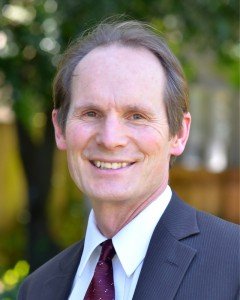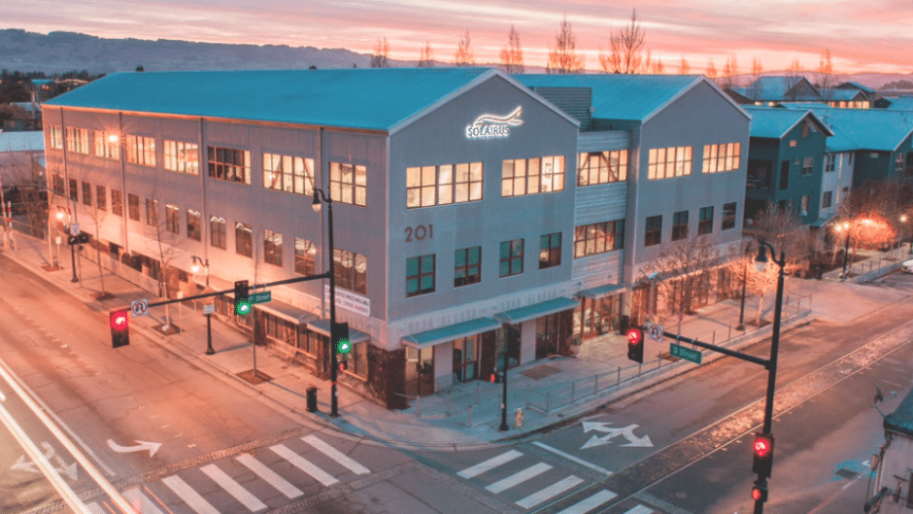Have you ever been flying out of a major urban area and looked down at the vast swath of commercial and industrial rooftops and wondered: “Why aren’t all of these covered with solar panels?” There are various reasons why some roofs don’t have solar; for example, some aren’t designed to hold an additional load, or they have too much other equipment on them or too much shading from other buildings. According to Andrew Cameron, Chief Operating Officer of Energy-Producing Retail Realty, Inc. (EPR2, read “EPR squared”), there is another major reason that accounts for many of the otherwise eligible rooftops: the value proposition of solar financing often does not appeal to owners of commercial property, especially on multi-tenant properties.
Standard models require the property owner or tenant to take out a loan to pay for installation, either in the form of a cash loan, Power Purchase Agreement, Solar Lease, or PACE financing. With multi-tenant properties, the owner doesn’t typically occupy the property or pay for its electricity use, so financing a large investment they don’t get a direct benefit from doesn’t usually make financial sense. Similarly, the tenants don’t own the property, so it’s difficult for them to make that large of an investment ($750,000 – $2,000,000) when they might only lease the property for 5 to 10 years.
Enter EPR2, with a new business model which was specifically designed to address the concerns of commercial property owners and tenants, by eliminating the schism between owners’ and tenants’ interests in regard to solar. EPR2 works with the owner to acquire the rights and an easement on the owner’s property, usually a rooftop or parking lot, so that they can make an investment in providing onsite solar production. Once they have the agreement, EPR2 works with the property owner to design a system that fits the individual property best. As the developer, EPR2 manages vendor selection, construction, and oversees the operation and maintenance of the system.
EPR2 makes a return on their investment by providing the access to the solar at a minimum savings of 10% on their current electricity bills, with actual savings sometimes as high as 30%. In the case of a multi-tenant building with the tenants using the power, tenants have access to the solar at a lower cost, and the owner receives percentage rent from EPR2 for the solar production. Cameron says that “the best part of our approach is that owners are able to increase the property’s cash flow without any associated expenses on day one, necessarily increasing the property value.” Many landlords view solar with reduced-cost energy to be a major differentiating factor to prospective tenants, and a helpful tool in tenant retention.
Can this work in the real world? Yes. EPR2 has partnered with Basin Street Properties (BSP), one of the largest property owners in Sonoma County, to initially develop three solar projects at three different properties, located in Petaluma, Santa Rosa, and Sacramento. Two of the three projects are covered parking lots and one of those—the Marina Crossing apartment complex, near the Petaluma Sheraton—is already under construction. This is a 270-kilowatt project with about 750 solar panels. When it is completed, it will provide approximately 50% of the development’s energy use.
Blake Riva, President at BSP said: “Solar produces local, clean electricity, which decreases our impact on the climate and environment. We are proponents of achieving energy efficiency and environmental benefits, but also wanted to make sure that the project made sense from an economic perspective.”
Riva says that the apartment complex in Petaluma will be open starting December 1st. He is excited by the project because it provides the benefits of shaded parking, and cleaner, cheaper electricity to their tenants, while increasing the overall value of the property. He said that EPR2 has been an excellent partner to work with and BSP will definitely continue to pursue these kinds of projects that benefit the environment and the bottom line.
Cameron says that there is a lot of opportunity in Sonoma County. He thinks that there is potential to develop between $200 to $250 million worth of new, commercial solar assets here. He estimates that, statewide, around 6 billion square feet of commercial real estate is currently appropriate for this kind of development.
When asked about the potential for over-production of energy during the middle of the day due California’s surge in solar production and the lack of storage to capture surplus energy, he responded that these commercial properties are mostly using power in the middle of the day during peak production.
He also explained that their approach can be used to support the development of a variety of renewable energy technologies, from solar to storage, biogas, or electric vehicle charging. If there is a market for the technology, their platform could be applied to develop it.
If EPR2 has found the right way to unlock the rapid deployment of solar on large commercial buildings, this has the potential to reshape energy markets by shifting some large loads away from the utilities and toward local generation. Their partnership with Basin Street Properties suggests that things may be trending their way.
Barry Vesser leads the Business for Clean Energy program for The Climate Center.


